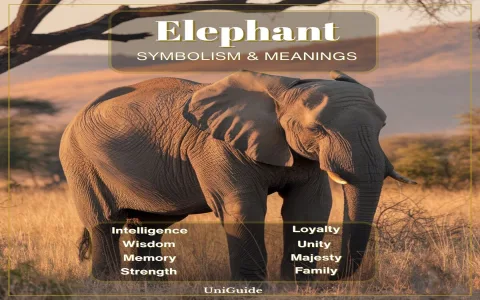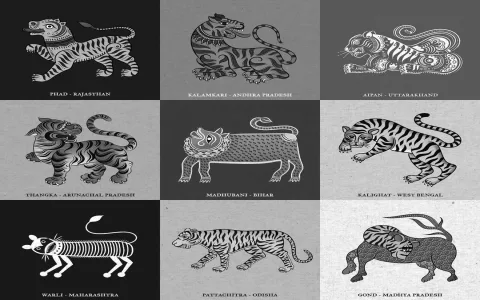My Messy Start with Dream Decoding
Let me tell you, when I first started trying to decode my own dreams, it was an absolute nightmare. Not the dreams themselves, but the process of figuring out what they meant. Every time I woke up from something intense, like that recurring one where I saw this giant, calm elephant just standing there, I’d rush to Google, frantic to find the answer.
The results? A complete and utter mess. One site said elephants mean luck and prosperity. Another insisted it symbolized a massive, impending burden or responsibility. A third, usually some pseudo-psychology forum, just rambled about repressed memories of visiting a zoo. It was a contradiction piled on top of vague garbage. I felt like I was staring at a thousand pieces of a jigsaw puzzle, and none of them fit the picture I was holding in my head.
I realized quick that I couldn’t trust external sources that way. Just like relying on a hundred different programmers all using different languages for one system—it creates chaos. I needed a single, reliable framework, something I could test and verify myself. So I threw out all the random books and websites. I decided I was going to become my own dream decoder by treating it like a serious field study, a rigorous logging process.
The Catalyst: The Unshakeable Elephant Dream
This whole thing kicked off years ago when I was feeling totally adrift. I was stuck in a job that paid the bills but sucked my soul dry. I had this idea for a big change—starting this blog, shifting my focus entirely—but I was paralyzed by fear. Every night, or at least once a week, the elephant would appear. It was always the same: a massive, gray African bull, silent, standing perfectly still, like a mountain in the mist. My feeling upon waking was always the same, too: a confusing mix of immense pressure and profound calm.
I knew this dream was important, but the conflicting interpretations just confused me further. Was it telling me to take on the massive burden of starting a business? Or was it telling me to stay grounded and safe where I was? I had to develop a practice that cut through the noise.
The Practical System I Built (My Elephant Log Protocol)
I stopped focusing on the definition of the symbol and started focusing on the process of the experience. My system was simple, heavy on logging, and focused entirely on the personal context. When I had the elephant dream again, I decided this was going to be my definitive test case.
My procedure involved three critical steps:
- Capture the Context and Action: Immediately upon waking, I grabbed my notebook. I didn’t just write “Elephant.” I detailed the setting, the elephant’s specific action (standing guard next to a dry riverbed), and my physical and emotional reaction (awe, safety, and a weird physical pressure in my chest). The action, or lack thereof, is key.
- Cross-Reference Historical Resonance (Filtering for Consistency): I stopped using generic modern sites. I dug into classical spiritual texts—stuff on Hindu symbolism (Ganesha: removing obstacles, wisdom, stability) and older Western sources (memory, strength, self-reliance). I wasn’t looking for the answer, I was looking for the consistency in universal meaning. If 9 out of 10 ancient traditions link the elephant to deep memory and foundational strength, that’s what I focused on.
- The Reality Check (The Action Phase): This is the part that converts dream data into real-world guidance. I took the generalized consistent meaning (wisdom, protective power, deep memory) and slammed it against my current life struggles. Where was I refusing to trust my own past wisdom? What decision felt too big? This required brutal honesty.
Decoding the Hidden Message: The Power of Self-Trust
When I put that stable, imposing elephant dream through my three-step system, the hidden message became painfully, brilliantly clear. I had been listening to everyone around me—family, colleagues, random online “gurus”—telling me my plan to leave the corporate job and start this blog was reckless, too large a risk, and ultimately doomed to fail. I was absorbing their fear, making their doubts my own.
The elephant in the dream represented massive, grounded power and inherent wisdom. But the feeling of “absolute safety” I recorded wasn’t about external protection; it was about my own internal resource. Elephants are famed for long-term memory and their ability to navigate complex terrain based on stored knowledge. The dream wasn’t telling me I needed to find a mentor or get outside help; it was telling me to stop ignoring the huge bank of experience and wisdom I had already accumulated.
It was an internal mandate to stop listening to the loud, messy external noise and instead lean on my own inherent, stable strength. The pressure I felt wasn’t the burden of the new venture; it was the internal pressure of suppressed power finally needing an outlet.
The dream wasn’t a warning about an impending problem; it was an affirmation of my readiness to face whatever came next. The elephant wasn’t a burden coming to me; it was the sheer force of resilience and wisdom within me, ready to support the risky leap I was about to take. It was a massive relief, like finding the one true instruction manual in a stack of cheap flyers.
The Result and the Takeaway
I didn’t quit my job the next day, of course. I’m pragmatic; I set up a timeline. But I started treating my plans—this very blog, in fact—with the respect and gravity of that dream. I stopped apologizing for wanting to change direction. I started acting with the grounded confidence the elephant symbolized. I recognized that my past struggles weren’t liabilities; they were the necessary preparation that gave me that massive, steady power.
The practice worked. I made the jump, launched the blog, and have been running successfully ever since, far away from the petty drama of my old job.
So, if you’re dreaming of elephants, stop Googling nonsense. Log the details. Look inside. That hidden message isn’t coming from outside; it’s your own powerful subconscious telling you: you already have the strength and wisdom you need for whatever mountain you face. Trust the process, trust the log, and most importantly, trust that internal elephant.















